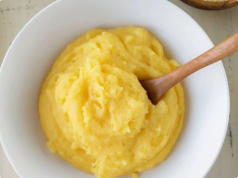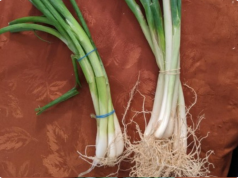For years, the most tender stir-fries, the juiciest chicken, the melt-in-your-mouth steaks at your favorite local diner—they’ve shared a quiet secret.
It’s not a $30 marinade.
Not a fancy gadget.
Not even hours of slow cooking.
It’s a humble little box you already own.
The same one you use for pancakes, for freshening the fridge, for soothing a bee sting.
Baking soda.
Yes—sodium bicarbonate—is one of the oldest, most trusted meat tenderizers in the world. Used for generations in Chinese kitchens (velveting), in American diner prep lines, and in home cooks’ quiet routines, it works not by force, but by grace: gently coaxing tight muscle fibers to relax, so meat stays tender—even when cooked fast.
And the best part?
It takes 15 minutes.
No pounding. No guesswork. Just kindness to the cut you’ve got.
Why It Works: A Little Science, Served Simply
Toughness in meat comes from tightly wound muscle fibers—and when they heat up, they squeeze out moisture like a wrung-out cloth. Dry, chewy bites follow.
Baking soda, a mild alkali, helps by:
🔹 Raising the pH just slightly on the meat’s surface
🔹 Loosening the protein structure, so the meat holds onto moisture
🔹 Preventing over-bonding during cooking—so juices stay in, not out
The result? Chicken breast that’s juicy after a quick sear. Flank steak that yields with a fork. Pork chops that taste rich, not rubbery.
This isn’t magic.
It’s chemistry—practiced with care.
🌟 Fun note: In Chinese cooking, this method is called “velveting”—and it’s why their stir-fried beef slips like silk off the chopsticks. Often, it’s paired with a whisper of cornstarch and egg white—but even just baking soda, used well, works beautifully.
How to Do It—The Gentle, Foolproof Way
(For 1 lb / 450g of meat)
- Slice thoughtfully
→ Cut against the grain into even strips (for stir-fries) or ½-inch pieces (for stews). Thinner = faster tenderizing. - Make the tenderizing bath
→ In a bowl, whisk:
• 1 tsp baking soda
• 1 tbsp cool water
(Optional: add 1 tsp cornstarch for extra silkiness—especially good for stir-fries) - Coat & rest
→ Add meat, toss gently to coat.
→ Let sit 15–20 minutes at room temperature.
✅ Do not exceed 30 minutes—longer can leave a faint soapy note. - Rinse & dry—this is key
→ Rinse thoroughly under cold running water (30 seconds).
→ Pat very dry with paper towels—moisture is the enemy of a good sear. - Cook as usual
→ Stir-fry, pan-sear, or roast. You’ll notice: less shrinkage, more juiciness, deeper browning.
Best Cuts for This Method
✨ Chicken breast — Prone to drying out? This keeps it supple.
✨ Flank, sirloin, or round steak — Budget-friendly, now tender.
✨ Pork chops or tenderloin — Even lean cuts stay succulent.
✨ Lean ground meat — Add ¼ tsp per pound to meatloaf or burgers for a finer, moister texture.
🚫 Skip it for filet mignon or ribeye. These are already tender—let their natural richness shine.
Real Kitchens, Real Results
- 🥢 Chinese Velveted Beef: Baking soda + cornstarch creates that signature glossy, silken stir-fry texture.
- 🍽️ Diner-Style Steaks: Some chefs lightly dust lean steaks with baking soda 20 mins before searing—no one guesses why they’re so tender.
- 🍲 Weeknight Stews: Tough cuts soften faster—cut braise time nearly in half.
Three Gentle Reminders (From One Cook to Another)
🔸 Don’t skip the rinse. It removes surface alkalinity and ensures clean, pure flavor.
🔸 Pat dry—really dry. Wet meat steams; dry meat sears.
🔸 Respect the clock. 20 minutes is sweet spot. 40 is too far.
Baking Soda vs. Other Tenderizers—A Quick Guide
|
Baking soda
|
15–20 min
|
Quick-cook meats (stir-fries, searing)
|
Must rinse; not for long braises
|
|
Acid (vinegar, citrus)
|
30 min–2 hrs
|
Flavor + mild tenderizing
|
Too long = mushy texture
|
|
Salt brine
|
1–24 hrs
|
Whole poultry, pork roasts
|
Adds moisture & seasoning—but needs planning
|
|
Mechanical (mallet)
|
Immediate
|
Thick cutlets, chicken breasts
|
Changes texture visibly—not always desirable
|
Baking soda isn’t better than the others—it’s just different. It’s the answer when you need fast, quiet, effective help—no fuss, no fanfare.
A Final Thought
Tenderness isn’t about buying the most expensive cut.
It’s about honoring what you have—with knowledge, patience, and a little kitchen wisdom.
That box of baking soda in your cabinet?
It’s not just for rising bread or soothing heartburn.
It’s a quiet ally—helping you feed your people well, even on busy nights, even on tight budgets.
So the next time you pull out chicken breast or flank steak, pause.
Reach for the baking soda.
Give it 20 minutes of grace.
And when your husband takes a bite, looks up, and says—
“Now that’s tender,”
—you’ll know:
Some of the best secrets aren’t hidden.
They’re right there on the shelf.
Waiting to be remembered










